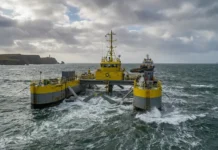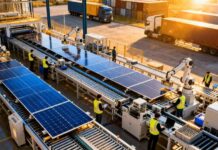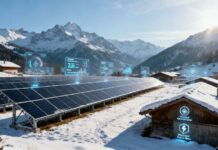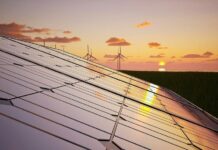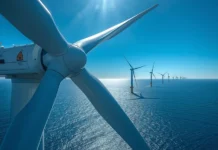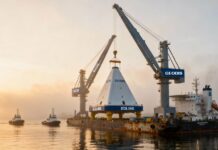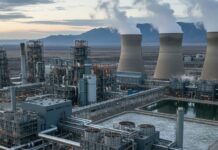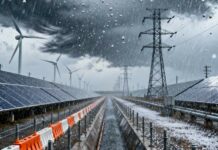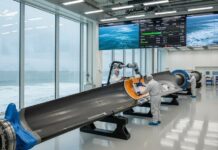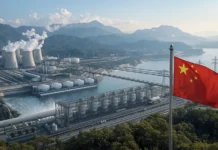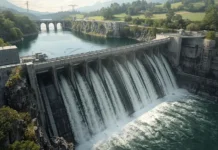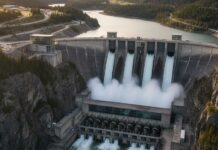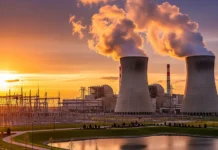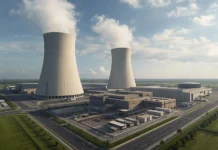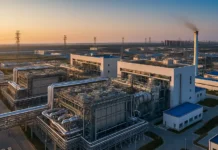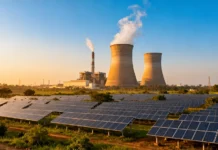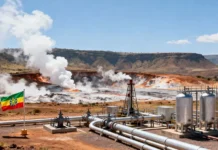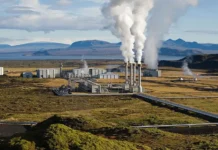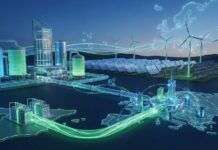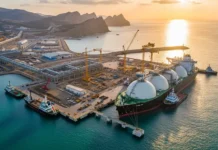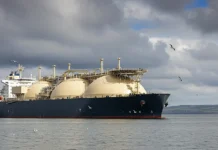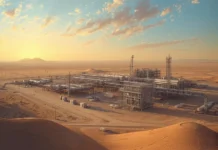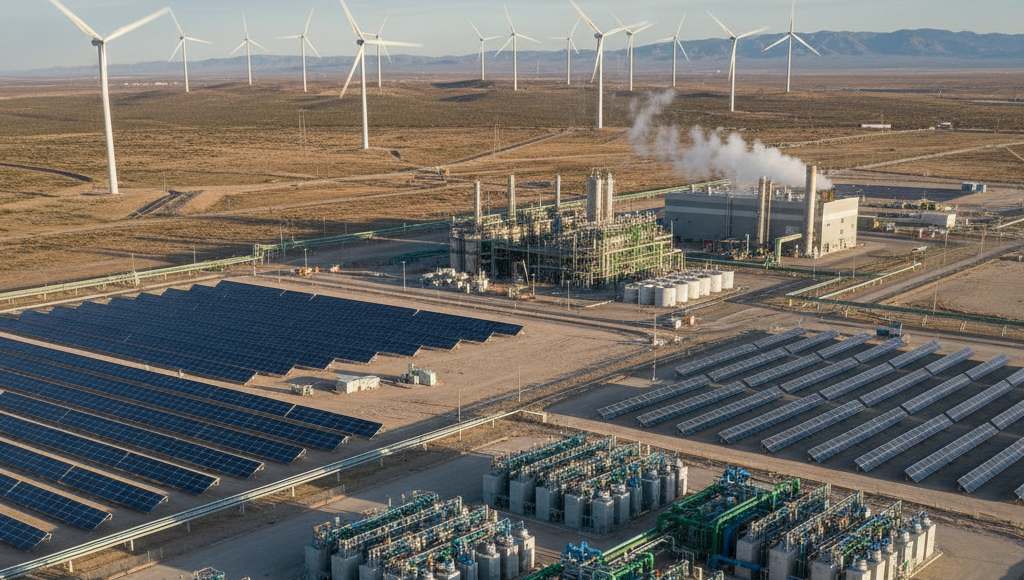Green Hydrogen Infrastructure: Building the Next Energy Economy
The global energy transition has found its catalyst in green hydrogen infrastructure, a transformative force reshaping how societies produce, store, and consume energy. As nations across the Middle East and worldwide commit to net-zero carbon targets, green hydrogen emerges not merely as an alternative fuel but as the foundational pillar of a reimagined energy economy. This hydrogen energy revolution promises to decarbonize sectors that electricity alone cannot reach, from heavy industry and long-haul transportation to chemical manufacturing and steel production.
The Green Hydrogen Imperative
Green hydrogen, produced through water electrolysis powered exclusively by renewable electricity, represents the cleanest pathway to hydrogen production. Unlike gray hydrogen derived from natural gas or blue hydrogen paired with carbon capture, green hydrogen generates zero emissions throughout its production lifecycle. The global hydrogen industry has surpassed 110 billion dollars in committed investment across more than 500 projects that have reached final investment decision, are under construction, or already operational, marking a 35 billion dollar increase in just one year. Since 2020, the sector has averaged a 50 percent year-over-year committed investment growth rate, demonstrating accelerating momentum.
Total committed capacity now exceeds 6 million tonnes per year, including 1 million tonnes already operational. After accounting for delays and expected attrition, the current project pipeline could support 9 to 14 million tonnes per year of clean hydrogen capacity by 2030, contingent upon demand materialization. On the demand side, approximately 3.6 million tonnes per year of binding offtake has been secured, with up to 8 million tonnes per year of clean hydrogen demand potentially materializing by 2030 as policy clarity emerges in key markets including the European Union, United States, Japan, and Korea.
The Middle East stands uniquely positioned to capitalize on this transformation. Saudi Arabia dominates the regional green hydrogen market with a 60 percent share in 2024, driven by its strategic Vision 2030 initiatives to become a global leader in renewable energy and hydrogen exports[131]. The Kingdom’s exceptional solar irradiance and robust wind corridors provide unmatched production potential, enabling it to target both domestic decarbonization and large-scale export markets in Europe and Asia.
Flagship Infrastructure Projects Reshaping the Landscape
The 8.4 billion dollar NEOM green hydrogen project in Saudi Arabia exemplifies the scale of ambition defining this sector. Expected to be among the world’s largest upon completion, the facility will produce up to 600 tonnes of hydrogen per day using 4 gigawatts of combined solar and wind renewable capacity. Construction progress has reached 80 percent completion across all project components including the green hydrogen facility, wind garden, solar farm, and transmission grid[140]. The 4 gigawatt solar and wind power generation assets are scheduled for completion by mid-2026, followed by electrolyzer commissioning, with first product availability expected in 2027.
When commissioned, NEOM will produce 600 tonnes per day of clean hydrogen through electrolysis using thyssenkrupp technology, nitrogen production by air separation using Air Products technology, and up to 1.2 million tonnes per year of green ammonia. The project will mitigate the impact of 5 million metric tonnes of carbon emissions annually. This equal joint venture between NEOM, Air Products, and ACWA Power represents the world’s largest utility-scale, commercially-based hydrogen facility powered entirely by renewable energy.
Oman has positioned itself as another regional powerhouse, with five of the ten low-carbon hydrogen plants in the Middle East either active or expected to be complete by 2030. The country’s strategic location near global shipping routes and renewable energy potential has attracted investments from international companies including Électricité de France, Copenhagen Infrastructure Partners, and Samsung E&A. The ACME Duqm Hydrogen Project Phase 2, with an expected capacity of 0.497 million tonnes per year, represents Oman’s largest green hydrogen initiative, expected to be operational by 2028.
The United States has mobilized significant resources through the Infrastructure Investment and Jobs Act, which allocated 8 billion dollars to develop Regional Clean Hydrogen Hubs focusing on improving hydrogen production, distribution, and storage. California’s Hydrogen Hub, the Alliance for Renewable Clean Hydrogen Energy Systems, received federal support covering up to 1.2 billion dollars to utilize the state’s clean energy leadership in producing hydrogen exclusively from renewable sources. Over 76 green hydrogen projects are planned in the United States over the next five years, backed by 36 billion dollars in investment.
Technology and Production Infrastructure
The electrolysis process forms the technological core of green hydrogen infrastructure. Modern electrolyzers, particularly proton exchange membrane systems, have achieved significant efficiency improvements while reducing costs. Shell’s Holland Hydrogen 1 project in the Netherlands, currently under construction, will be one of Europe’s largest renewable hydrogen plants with 200 megawatts capacity producing up to 80 tonnes of hydrogen per day. Powered by offshore wind from the North Sea, the plant exemplifies the integration of renewable generation with electrolyzer technology.
Electrolyzer manufacturing capacity is expanding rapidly to meet projected demand. EvolOH is building a green hydrogen electrolyzer manufacturing facility in Massachusetts that will use low-cost materials and rely solely on domestic supply chains. When fully operational, the facility will support up to 3.75 gigawatts of electrolyzer stacks annually, representing the largest such facility in the world.
The Ningxia Baofeng Energy Group operates one of the world’s largest green hydrogen plants, powered by 200 megawatts of solar photovoltaic capacity producing 27,000 tonnes of green hydrogen annually. This facility demonstrated the viability of large-scale integration between renewable generation and hydrogen production. The Xinjiang Green Hydrogen Plant, another of China’s largest projects with 260 megawatts capacity, produces 20,000 tonnes of green hydrogen per year powered by 300 megawatts of on-site solar and wind.
Transportation and Distribution Networks
Green hydrogen infrastructure extends far beyond production facilities to encompass comprehensive transportation and distribution networks. Unlike natural gas, hydrogen’s low density and small molecular size present unique transportation challenges requiring specialized infrastructure. Pipeline networks designed for hydrogen transport must account for material compatibility issues, as hydrogen can cause embrittlement in certain metals. New pipeline construction and existing natural gas pipeline retrofitting both present viable pathways for building hydrogen distribution networks.
Ammonia conversion offers an alternative transportation solution, particularly for long-distance export markets. Ammonia, which contains hydrogen but exists as a liquid at moderate pressures, can be transported using established maritime shipping infrastructure. The NEOM project’s production of 1.2 million tonnes per year of green ammonia specifically targets export markets where reconversion back to hydrogen can occur at destination facilities.
Compressed hydrogen transportation via tube trailers provides flexibility for early-stage markets and distributed applications. The Douglas County Green Hydrogen Project in Washington state, a 5 megawatt renewable hydrogen production facility, stores 400 kilograms of hydrogen on-site and distributes green hydrogen for fuel cell vehicles and industrial applications. This model demonstrates how decentralized production can serve local demand without extensive transmission infrastructure.
Storage Solutions Enabling Grid Integration
Energy storage capabilities distinguish green hydrogen infrastructure from intermittent renewable generation alone. Hydrogen can be stored in underground salt caverns, depleted natural gas fields, or pressurized tanks, providing long-duration storage that complements short-duration battery systems. This storage capacity enables renewable energy generated during periods of excess supply to be preserved and dispatched during demand peaks or generation shortfalls.
The Sauk Valley Green Hydrogen Plant in Illinois produces green hydrogen using power from a co-located solar plant, with capacity to produce 52 tonnes per year and store 400 kilograms of hydrogen on-site. The facility commenced commercial operations in March 2025, demonstrating the practical integration of solar generation, electrolysis, and storage in a single facility.
Seasonal storage represents a particular strength of hydrogen systems, where energy generated during high renewable production seasons can be stored for months and utilized during periods of lower generation or higher demand. This capability proves especially valuable in regions with significant seasonal variability in solar or wind resources.
Industrial Applications Driving Demand
Heavy industry provides substantial demand anchors for green hydrogen infrastructure development. Refineries currently consume significant quantities of gray hydrogen for desulfurization and hydrocracking processes. Shell’s REFHYNE II project at the Rheinland Refinery in Germany will install a 100 megawatt renewable proton exchange membrane electrolyzer expected to produce up to 44 tonnes of hydrogen per day to partially decarbonize site operations. The electrolyzer is scheduled to begin operating in 2027, following lessons learned from the 10 megawatt REFHYNE I facility that has operated since mid-2021.
Steel manufacturing represents another critical application where green hydrogen can replace coal-based reduction processes. Direct reduced iron production using hydrogen eliminates the carbon emissions associated with traditional blast furnace operations, offering a pathway to zero-emission steel. Several pilot projects globally are demonstrating this technology at commercial scale.
Ammonia production for agricultural fertilizers currently relies on gray hydrogen derived from natural gas. Transitioning this production to green hydrogen infrastructure would eliminate substantial emissions from a critical agricultural input. The integration of renewable electricity, electrolysis, and Haber-Bosch ammonia synthesis creates a fully sustainable fertilizer supply chain.
Economic Considerations and Investment Dynamics
The economics of green hydrogen infrastructure are rapidly improving as renewable electricity costs decline and electrolyzer manufacturing scales. Production costs have fallen significantly, with some regions achieving below 2 dollars per kilogram for green hydrogen where low-cost renewable electricity is available. Industry forecasts indicate continued cost reductions approaching 1 dollar per kilogram by 2030 in optimal locations, potentially achieving cost parity with gray hydrogen without carbon pricing.
Investment flows reflect growing confidence in hydrogen’s economic viability. China leads global investment with 33 billion dollars committed, followed by North America with 23 billion dollars and Europe with 19 billion dollars. North America stands out as the only region investing mostly in blue hydrogen, while all other regions focus almost entirely on green hydrogen.
The United States Inflation Reduction Act’s Section 45V Production Tax Credit provides up to 3 dollars per kilogram for hydrogen production based on carbon intensity, dramatically improving project economics. While proposed stringent regulatory frameworks and guidance delays have created uncertainty, the Department of Treasury announced plans to issue final rulemaking with additional flexibilities to enable industry prosperity.
Regional economic modeling demonstrates substantial multiplier effects from hydrogen infrastructure investment. Analysis estimates that every dollar in incentives going to hydrogen hub projects using 45V tax credits will generate 7 dollars in gross domestic product over four years while supporting an annual average of 22,000 jobs. For every direct job supported in a hub state, three additional jobs will be supported across the emerging supply chain spanning hub and non-hub states. From 2026 to 2035, the overall return on investment exceeds 6 to 1, with an average of 80,000 jobs supported during this period.
Policy Frameworks Accelerating Deployment
Government support has proven crucial for hydrogen infrastructure development, creating regulatory frameworks and financial incentives needed for growth. The European Union’s binding targets for renewable hydrogen use, combined with Germany’s supportive regulatory framework and funding programs, have enabled projects like REFHYNE II to reach final investment decision. These policies provide the long-term certainty required for multi-billion dollar infrastructure commitments.
Sovereign-backed financing mechanisms in the Middle East, particularly in Saudi Arabia and the UAE, provide capital access at favorable terms that improve project viability. Clear regulatory frameworks and active partnerships with firms from the United States, Japan, Germany, and South Korea are accelerating deployment. With active construction, secured offtake agreements, and an ambitious pipeline exceeding 60 gigawatts of renewable capacity dedicated to hydrogen production, the region is positioned to retain leadership well into the next decade.
Standardization efforts addressing hydrogen quality specifications, safety protocols, and equipment certification are reducing development costs and enabling equipment interoperability across projects. Industry organizations including the Hydrogen Council are facilitating knowledge sharing and best practice development that benefits the entire sector.
Challenges and Implementation Barriers
Despite remarkable progress, green hydrogen infrastructure faces significant obstacles. The 3 percent cancellation rate among announced projects, while modest, highlights that not all initiatives prove viable as they progress through development stages. Structural challenges including persistently high interest rates and delayed policy implementation in some regions add pressure to project selection processes.
Infrastructure gaps remain substantial, particularly in transportation and distribution networks. The lack of established hydrogen pipeline systems requires either new construction or natural gas pipeline conversion, both capital-intensive undertakings. Chicken-and-egg dynamics persist, where hydrogen production awaits distribution infrastructure while pipeline developers seek assured demand before committing capital.
Technology readiness varies across applications. While electrolysis technology is commercially proven, scaling to gigawatt-scale facilities introduces operational complexities. Long-duration storage in salt caverns requires suitable geology not available in all regions. End-use technologies including hydrogen turbines and fuel cells continue advancing but may require further development for certain applications.
Water consumption presents environmental considerations, particularly in water-stressed regions pursuing large-scale green hydrogen development. While electrolysis requires purified water, the quantities needed for major facilities can strain local water resources. Desalination using renewable electricity offers one solution, though adding cost and complexity.
The Pathway to a Hydrogen Economy
Green hydrogen infrastructure is transitioning from conceptual promise to physical reality. The 110 billion dollars in committed investment, 500 projects past final investment decision, and 6 million tonnes per year of capacity under development demonstrate that the hydrogen economy is entering its deployment phase. As production costs decline, policy support solidifies, and end-use applications mature, green hydrogen will increasingly fulfill its promise as the energy carrier enabling deep decarbonization across the global economy.
The Middle East’s leadership position, underpinned by exceptional renewable resources, strategic geographic location, and sovereign commitment, positions the region to become the hub of global hydrogen trade. With continued technology advancement, infrastructure investment, and policy alignment, green hydrogen will evolve from emerging technology to foundational element of the next energy economy, delivering clean power where electricity alone cannot reach and enabling the complete transformation of industrial civilization toward sustainability.



